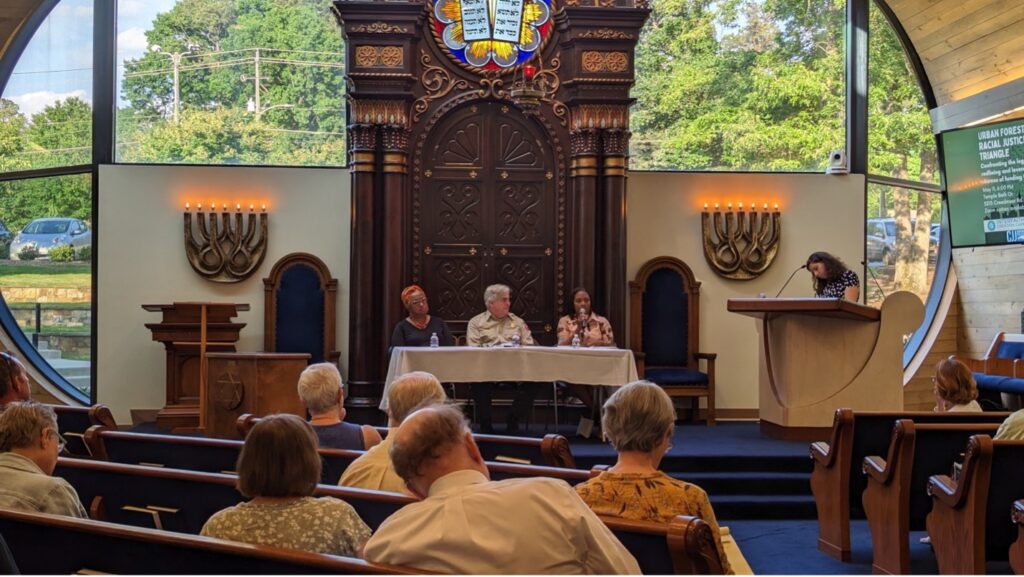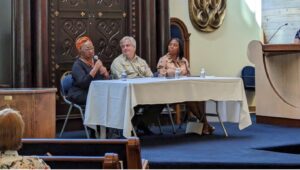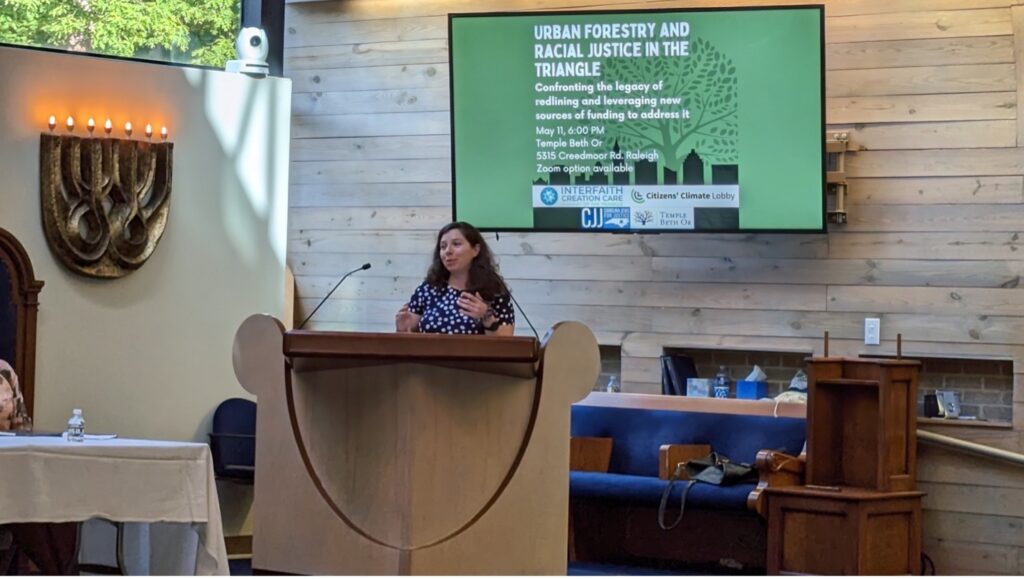
Building Capacity is Critical for
Urban and Community Forestry Projects in our Communities
by Deborah Hooker
Seventy people (in-person and via zoom) tuned in for the Urban Forestry & Racial Justice Panel Discussion on May 11, 2023. A recording is available here. It was a collaborative effort by Interfaith Creation Care of the Triangle, the Central NC & Cape Fear Region Citizens’ Climate Lobby Chapter, Carolina Jews for Justice, and Temple Beth Or’s Tikkun Olam Environmental Sustainability Subcommittee.
Whether you attended or not, you can urge your public officials to take action by clicking here. Use a sample message to easily email your municipal and county leaders to let them know about the Inflation Reduction Act funding coming soon for urban forestry projects in underserved communities.
If there was one solid take-away from the discussion, it was that “building capacity” is essential – if we want to connect underserved communities with the $1.5 billion in the Inflation Reduction Act’s urban and community forestry funds. But what does “building capacity” mean for the lay person who wants to help?

Our panelists: Bonita Green, Andrew Pleninger, and Ginell Rogers
Pieces of the answer were supplied by our three panelists: Bonita Green, President of Merrick-Moore Community Development Corp; Andrew Pleninger, Urban & Community Forest Program Head for the NC Forest Service, and Ginell Rogers, Executive Director of TreesDurham.
Andrew’s agency, the NC Forest Service, will be administering the IRA funds, so he began by identifying the two essentials for a funding proposal:
 establishing partnerships with those who have similar goals; and
establishing partnerships with those who have similar goals; and- finding the expertise to design, administer, and monitor such projects.
“You come to us with a project and budget,” he said. “We don’t design them.” He also acknowledged the lack of investment and years of green infrastructure neglect—the lingering effects of redlining– that leave communities of color most vulnerable to the effects of climate change.
Bonita Green has years of on-the-ground work greening her Southeastern Durham community and dealing with those effects. “Providing green space is a priority,” she said, because it helps mitigate the “heat island” effect and offers space to address food insecurity. In working with partners, she stressed “listening, really listening to your partners and developing a strategy together.” This listening is critical, she reminded us: the legacy of white supremacy and lynching complicates the black community’s perception of trees.

Moderator Rachel Karasik of Carolina Jews for Justice
It’s clear that building capacity involves creating partnerships, locating expertise, and being respectful listeners and collaborators. What is less clear is how to identify those we might effectively and respectfully partner with. Andrew suggested checking to see if your community has done a tree canopy assessment. Tree canopy cover is often greater in areas with higher median income and less in lower income communities. Ginell reminded us that “faith community members can be helpful ambassadors” into other communities. She also recommended “paying attention to what your city [or town] planning department is doing.” There may already be urban forestry initiatives in the works that could benefit from more community support.
Asked for their “final words” on engaging with urban forestry projects, Bonita responded with “Caring.” For Andrew it was important to remember that smaller projects are as important as larger ones: “A little adds up to a lot.” And Ginell echoed advice familiar to our readers from other contexts: “Engage the youth.”




